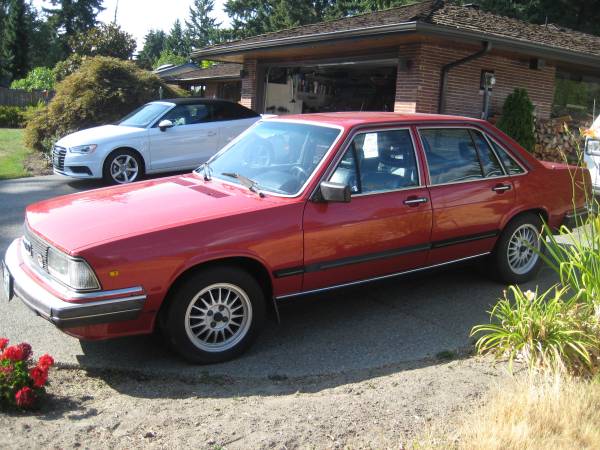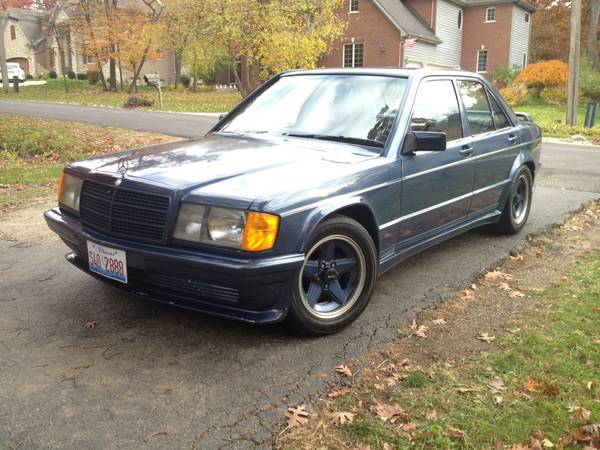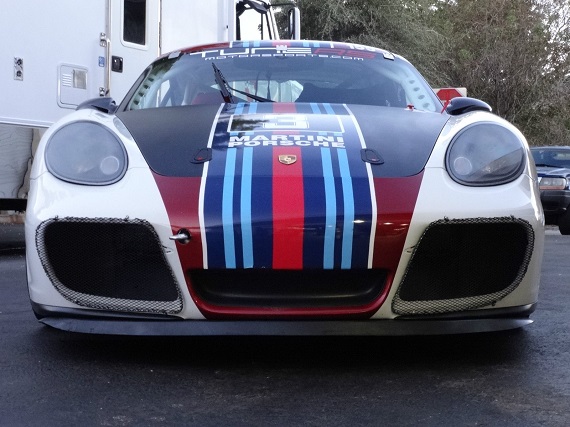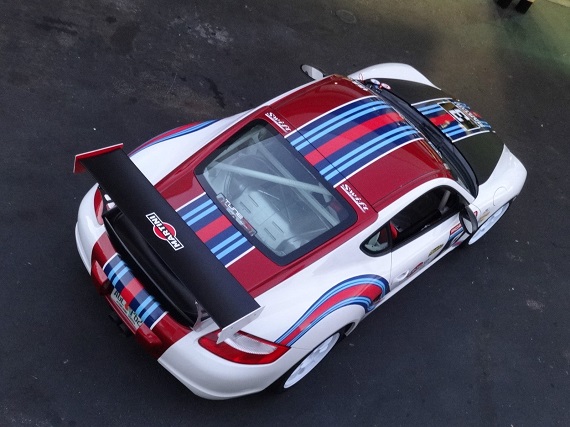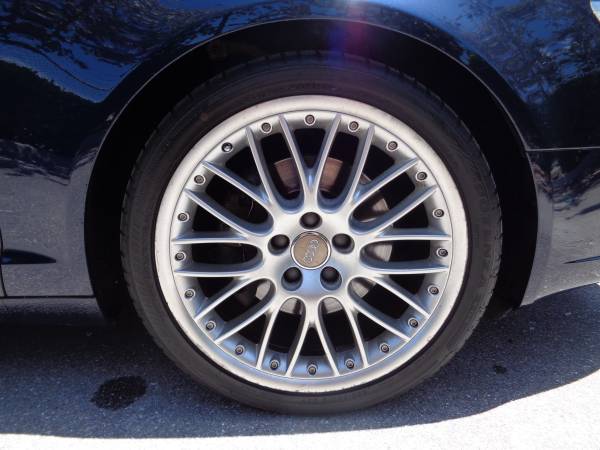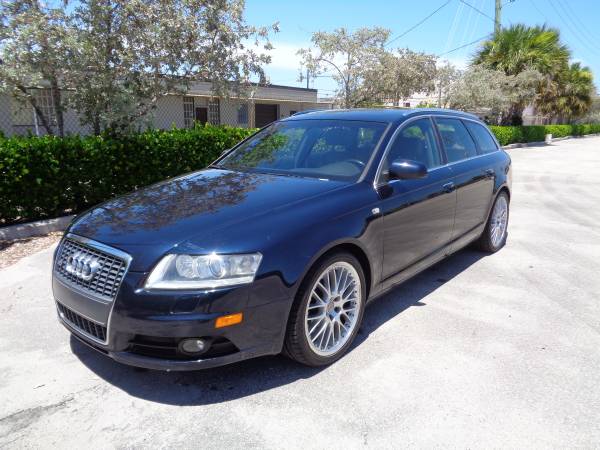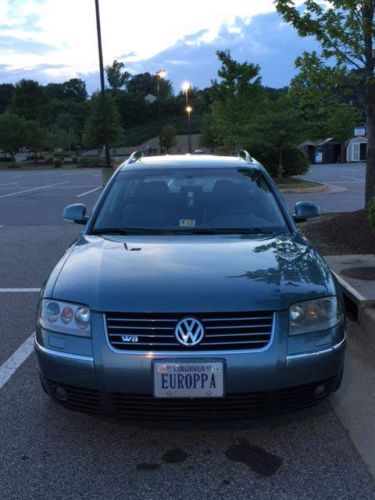The word “rare” gets tossed around an awful lot, and if I’m frank we misuse it often. We talk about rare color combinations, rare drivetrain configurations, or rare specifications. But how about an entire model line that’s rare these days? Now, that’s worthy of taking a second look, and while all early Audis fall into that category, the Type 43 large chassis cars are truly not often seen anymore. There are a few reasons that; Audi’s focus in 1984/5 shifted towards the more popular all-wheel drive models as they looked to go upscale in the market with the new Type 44 chassis. Additionally, many of the early Audis that were sold in the U.S. were sold in areas that left their rust-prone metal fatigued. And the Type 44 chassis was so thoroughly modern, it instantaneously rendered the still fairly new Type 43 a dinosaur of design. If “Video Killed the Radio Star” in 1978, aerodynamics, modern design and quattro killed the first 5000 in 1984. Looking back, though, the 5000 was a lovely design; sure, it was boxy and the U.S. didn’t really get the top-spec European 200 5T model. But by 1983 there were 3 different options to choose from; the base model was the 5000 S, available with the 2.1 inline-5 found also in the 4000 5+5 and the Coupe GT. At 100 horsepower, it wasn’t much of a match for the weight of the Type 43 chassis, but it was available with a 5-speed manual. Step up to the 5000 Turbo, and you got a healthy bump to 130 horsepower but could only select the dim-witted but reliable 3-speed automatic. But the sleeper of the trio, and the one that was seldom selected, was the 2.0 liter turbocharged inline-5 diesel option:
Author: Carter
If you want a fast tuner small sedan from the 1980s, you basically have two options: Alpina is the go-to favorite, and if you’re a bit different you find a Hartge. That’s it, really, because while companies like Abt modified Audi 80/4000s and occasionally you might run across a Callaway Turbo Jetta GLi, there just wasn’t much else out there. For Mercedes-Benz, you could of course buy their in-house tuned Cosworth 190E, but AMG seemed to focus on the larger W124 and W126 chassis instead of the W201. That is, of course, except for their 911-fast 190E 3.2 and 3.4 – cars seldom seen. Before we go any farther, this isn’t one of those mega-motored cars, from everything I can tell. What it appears to be, though, is a clean and tidy looking 190E in a quite rare color with some pretty awesome period AMG details; in this case, the ultra-rare widebody kit from Affalterbach:
CLICK FOR DETAILS: 1985 Mercedes-Benz 190E AMG on Craigslist
Comments closedYesterday, our editor Paul sent me a quick message with a link enclosed – “Enjoy a late birthday present!” he said. The link was to the movie Le Mans, the 1971 classic staring Steve McQueen piloting the equally iconic Gulf-liveried John Wyer run Porsche 917Ks. But while that combination would be emblazoned in history as the defacto color for the Porsche 917, to me the more memorable combination was the car that actually won the 1971 Le Mans 24 Hours. That was the magnesium-framed number 22; a pale white car that debuted an equally iconic combination for me as it was sponsored by Martini Racing. Later in the 1970s, the livery would become more famous as the multiple winners with both 935 and 936 chassis, but few remember that the connection went back into the era of the light-blue Gulf cars. The Martini livery is still popular today, carried on by a proud tradition into Formula 1 as well as being recreated by amateur enthusiasts in the Porsche Interseries, a Cayman-only race program that notably offered drivers to run famous Porsche colors. Very few can afford the opportunity to even see 917s in action – never mind own one. But a Cayman S racer? While not cheap, they’re considerably more affordable than you’d expect:
CLICK FOR DETAILS: 2007 Porsche Cayman S on eBay
Comments closedWe tend to focus on the faster or the more unique wagons here at GCFSB, a habit which leaves out a huge swath of competent and quite nice automobiles. A great example is the Audi C6 chassis – the swan song, at least for the time being, for the large Audi wagon in the U.S.. It ended three generations of large Avants here, and while it was ostensibly replaced by a car I love – the hatchback A7 – its presence is still missed. There were only two basic configurations that the C6 Avant was available in here; from 2006-2009, you could get the A6 in wagon form only with the 3.2 V6 and the 6-speed automatic Tiptronic transmission. For enthusiasts, that was a bit of a letdown after the plethora of configurations in the C5; no less than 5 different layouts had previously been available. It was strange given the sales success that the C5 enjoyed; Audi chose not only to not bring the go faster V10 S6 and go fastest twin-turbo V10 RS6 here, but the new Allroad also didn’t make the excursion across the seas. Why? Well, quite simply, the sales model in the U.S. had thoroughly changed. While German manufacturers had resisted the temptation to fully delve into the “Sport Utility” market in the early 2000s, but the end of the decade that was just the opposite. Today Audi offers only one wagon option; the A4-based pseudo-offroad Allroad Avant is only available in 2.0T 8-speed auto configuration. Compared that to the early 2000s, when Audi offered fully 6 different wagons with a myriad of different transmission and engine combinations. Only a few short years later, Audi’s model range contained only two wagon options; the A4 Avant remained a popular option, while the A6 seemed to fade into obscurity. You just don’t really see them much, and I live in an area that really loves Audi Avants. Perhaps Audi priced itself out of the market; the base price on a 2006 A6 Avant was a pretty staggering $46,870 before options. Spec one out fully and you were at $60,000 for your family hauler. But for that amount you got a tech-heavy and attractive big wagon that offered pretty respectable performance. The 3.2 V6 had advanced over previous versions considerably; now all-aluminum and offering 255 horsepower, despite the over 4,000 lb. curb weight the Avant scooted to 60 in just a tick over 7 seconds. Opt for the S-Line package, and you got some serious Bologna skins to keep it planted, too – 255-35-19, in the case of this example. Inside was pure luxury, making for a discrete chalet sheppard for you and your four friends:
CLICK FOR DETAILS: 2007 Audi A6 3.2 quattro Avant S-Line on Craigslist
4 CommentsI’m obviously a big fan of the B5/5.5 Volkswagen Passat Variant, having now owned two. They’re fun to drive, have remarkable ride quality and a near-luxury feel, and are hugely capable carriers. Notably, one time I got an entire Ikea kitchen inside the rear of the my 1999 – aside from too-soft springs for really heavy loads, the 5-doors have shrugged off every single crazy task I’ve thrown at them and though parts can be a bit expensive they’ve been very dependable. But there is one thing that really flummoxes my Passat of choice, the 1.8T. Put a few people in it, turn the outside heat up above 90 with high humidity and crank the air conditioning, and the turbocharged inline-4 can barely get out of its own way. The lag, which in most other situations is barely noticeable, suddenly becomes laughable – especially if there are any hills involved. Of course, in the Passat, you had several options for engines which had more power than the 1.8T out of the box; the 2.8 30V V6 wasn’t a bad option, but if you wanted all-wheel drive, too, then you could only get an automatic. But move up to the 270 horsepower 4 liter W8, and you could select a 6-speed manual mated to the 4Motion drivetrain in Variant wagon form. That was something that only 95 people did from 2003 to 2004, making these Passats highly sought “unicorns” for some VW faithful:

